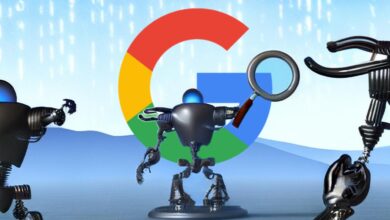How to Build a Successful Content Marketing Funnel from Scratch

Introduction
In today’s digital age, content marketing has become a crucial aspect of any successful marketing strategy. A well-structured content marketing funnel can help businesses attract, engage, and convert leads into customers. In this blog, we will discuss how to build a successful content marketing funnel from scratch, starting with the basics and moving on to more advanced strategies.
Understanding the Content Marketing Funnel
Before diving into building a content marketing funnel, it is essential to understand what a content marketing funnel is and how it works. A content marketing funnel is a strategic framework that guides potential customers through the buyer’s journey, from awareness to conversion. It consists of three main stages:
1. Top of the Funnel (TOFU) – Awareness
At the top of the funnel, potential customers become aware of your brand and the problems you can solve for them. This stage is all about creating valuable and educational content that attracts your target audience and addresses their pain points. Some examples of TOFU content include blog posts, social media posts, infographics, and videos.
2. Middle of the Funnel (MOFU) – Consideration
In the middle of the funnel, potential customers are considering their options and evaluating your products or services. This stage is about providing more in-depth content that educates and informs your audience about how your offerings can help them solve their problems. Examples of MOFU content include case studies, whitepapers, webinars, and e-books.
3. Bottom of the Funnel (BOFU) – Decision
At the bottom of the funnel, potential customers are ready to make a purchase decision. This stage is about providing content that convinces your audience to choose your products or services over your competitors. Examples of BOFU content include product demos, free trials, testimonials, and pricing pages.
Building a Content Marketing Funne
Now that you understand the stages of a content marketing funnel, let’s discuss how to build one from scratch:
1. Define Your Target Audience
The first step in building a successful content marketing funnel is to define your target audience. Who are you trying to reach with your content? What are their pain points, interests, and preferences? By understanding your target audience, you can create content that resonates with them and drives engagement.
2. Create Engaging TOFU Content
At the top of the funnel, focus on creating engaging and informative content that attracts your target audience. This content should address their pain points and provide value without being overly promotional. Consider using a mix of blog posts, social media posts, videos, and infographics to reach your audience at this stage.
3. Develop Educational MOFU Content
In the middle of the funnel, develop educational content that helps your audience understand how your products or services can solve their problems. This content should be more in-depth and provide valuable insights that position your brand as an authority in your industry. Consider creating case studies, whitepapers, webinars, and e-books to engage your audience at this stage.
4. Offer Persuasive BOFU Content
At the bottom of the funnel, offer persuasive content that convinces your audience to take action and make a purchase. This content should highlight the benefits of your products or services, address common objections, and provide social proof through testimonials and case studies. Consider offering product demos, free trials, discounts, and limited-time offers to incentivize your audience to convert.
Optimizing Your Content Marketing Funnel
Building a content marketing funnel is just the first step. To ensure its success, you need to continuously optimize and refine your funnel based on data and insights. Here are some tips for optimizing your content marketing funnel:
1. Track and Analyze Key Metrics
Monitor key metrics such as website traffic, engagement rates, conversion rates, and customer acquisition costs to understand how your content is performing at each stage of the funnel. Use tools like Google Analytics and marketing automation platforms to track and analyze these metrics effectively.
2. A/B Test Your Content
Experiment with different types of content, headlines, calls-to-action, and visuals to see what resonates best with your audience. A/B testing allows you to identify the most effective content and optimize your funnel for better results.
3. Personalize Your Content
Personalization is key to engaging your audience and driving conversions. Use data and insights to personalize your content based on your audience’s preferences, behavior, and interactions with your brand. Consider using dynamic content, personalized recommendations, and targeted messaging to create a more tailored experience for your audience.
4. Nurture Leads with Email Marketing
Email marketing is a powerful tool for nurturing leads and guiding them through the content marketing funnel. Create targeted email campaigns that deliver relevant content to your audience based on their stage in the funnel. Use email automation to send personalized messages, follow-ups, and re-engagement campaigns to keep leads engaged and moving towards conversion.
FAQs
1. What is the role of SEO in a content marketing funnel?
SEO plays a crucial role in a content marketing funnel by optimizing your content for search engines and improving its visibility to your target audience. By incorporating relevant keywords, meta tags, and high-quality backlinks, you can attract more organic traffic to your website and improve your chances of converting leads into customers.
2. How can I measure the success of my content marketing funnel?
You can measure the success of your content marketing funnel by tracking key metrics such as website traffic, engagement rates, conversion rates, and customer acquisition costs. Use tools like Google Analytics, marketing automation platforms, and CRM systems to monitor these metrics and make data-driven decisions to optimize your funnel for better results.
3. How long does it take to see results from a content marketing funnel?
The timeline for seeing results from a content marketing funnel can vary depending on your industry, target audience, and the quality of your content. In general, it takes time to build brand awareness, engage leads, and nurture them through the funnel towards conversion. It is essential to be patient, consistent, and proactive in optimizing your funnel to see sustainable results over time.
In conclusion, building a successful content marketing funnel requires careful planning, execution, and optimization. By understanding your target audience, creating engaging content, and continuously refining your funnel based on data and insights, you can attract, engage, and convert leads into loyal customers. Follow the tips and strategies outlined in this blog to build a successful content marketing funnel from scratch and drive sustainable growth for your business.




